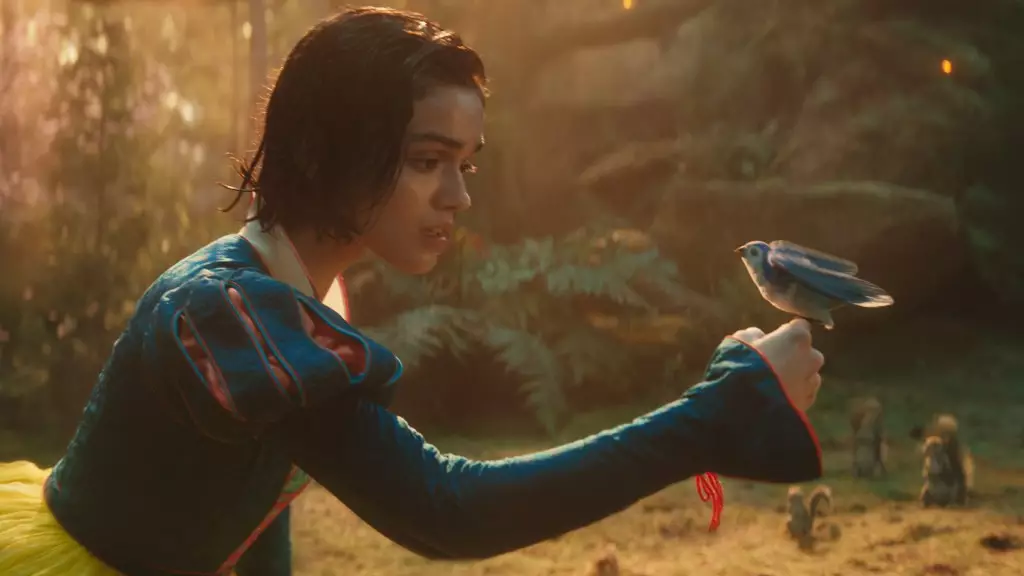Disney’s storied legacy is drenched in nostalgia, but it often feels like the company is walking a tightrope between creative innovation and public backlash. This weekend, the live-action adaptation of “Snow White” attempts to resurrect the enchanting tale that first captivated audiences in 1937. Despite the original being a cultural cornerstone, the new version—initially a source of excitement—has been marred by controversy over its casting choices and the social media uproar that ensued. The film’s estimated $270 million production cost reflects a Herculean effort, but will it translate into box office success or infamy?
The Casting Controversy
One of the most contentious points has been the casting of Rachel Zegler, an actress of Latina and Polish descent, as the lead. Critics argue that this decision strays too far from the original character’s European roots. However, Zegler’s own outspoken nature, especially regarding her remarks on the original film and her public criticism of political figures like Donald Trump, has effectively polarized public sentiment. Many see her casting as a progressive move towards inclusivity, while others perceive it as a hollow attempt to appease a changing demographic landscape. The dynamics at play serve as a testament to how art is constantly negotiating its intersection with politics—a landscape Disney knows all too well.
Box Office Predictions Amidst Mixed Sentiment
As we anticipate the film’s debut, projections are rather underwhelming, estimating between $45 million and $50 million domestically, along with an overseas projection of another $55 million. While those numbers may seem respectable, they could be perceived as a failure given the hefty financial investment involved. The presales are awash with caution, standing at around $5 million—a figure that positions it behind the likes of “Kung Fu Panda 4” and ahead of “Dumbo.” If these numbers do reflect audience sentiments, one must wonder whether the film will ultimately sink or swim amidst a marketplace that desperately craves a hit.
The Disconnect with Traditional Audiences
Interestingly, the audience demographic skews predominantly towards younger females and family moviegoers, reflecting a somewhat predictable audience overlap with previous Disney hits. The franchise’s historical ties to female-centric storytelling might resonate more with this audience, yet it also poses questions about legacy and authenticity. With ticket sales potentially hampered by Zegler’s polarizing public persona and the contrasting expectations stemming from the original character’s heritage, the new “Snow White” might struggle to align with the expectations built over generations.
Critics and Press Reactions: A Cautious Approach
While the film has yet to receive its Rotten Tomatoes scores, the response from critics and mainstream media is already telling. Disney’s decision to pare down its premiere, intentionally excluding mainstream press from the carpet, suggests an acute awareness of the divide their decisions have caused. It’s a troubling tactic rooted in fear rather than confidence, showcasing a company grappling with how its brand is received in an era of hyper-scrutiny in social media.
Comparative Performance: Can History Repeat Itself?
Disney has had its ups and downs in recent years, especially when faced with public controversies. The casting of Halle Bailey in “The Little Mermaid” met with skepticism but ultimately resulted in impressive box office numbers. However, that film’s international performance lagged, raising red flags. Similarly, the backlash surrounding “Solo: A Star Wars Story” proves how quickly public sentiment can undermine cinematic endeavors when fans feel disconnected from their beloved franchises. It begs the question: can “Snow White” overcome this mounting skepticism, or is it destined to become yet another cautionary tale in Disney’s storied history?
With its impending release paired with a heavy cloud of controversy and fragile public sentiment, “Snow White” invites scrutiny from both critics and fans. Only time will tell whether it finds its footing or becomes a tale best left in the past.

